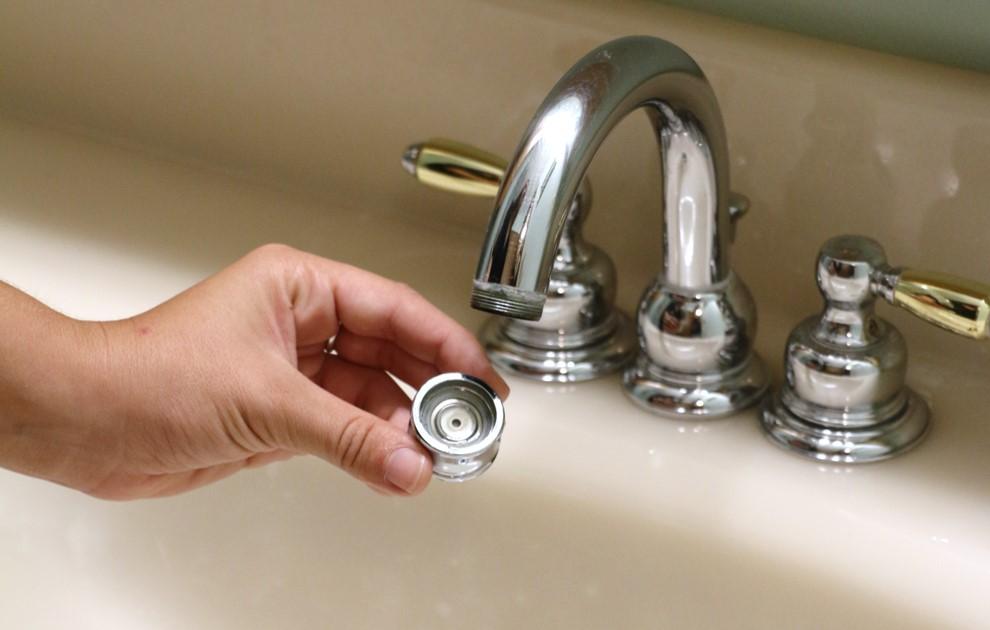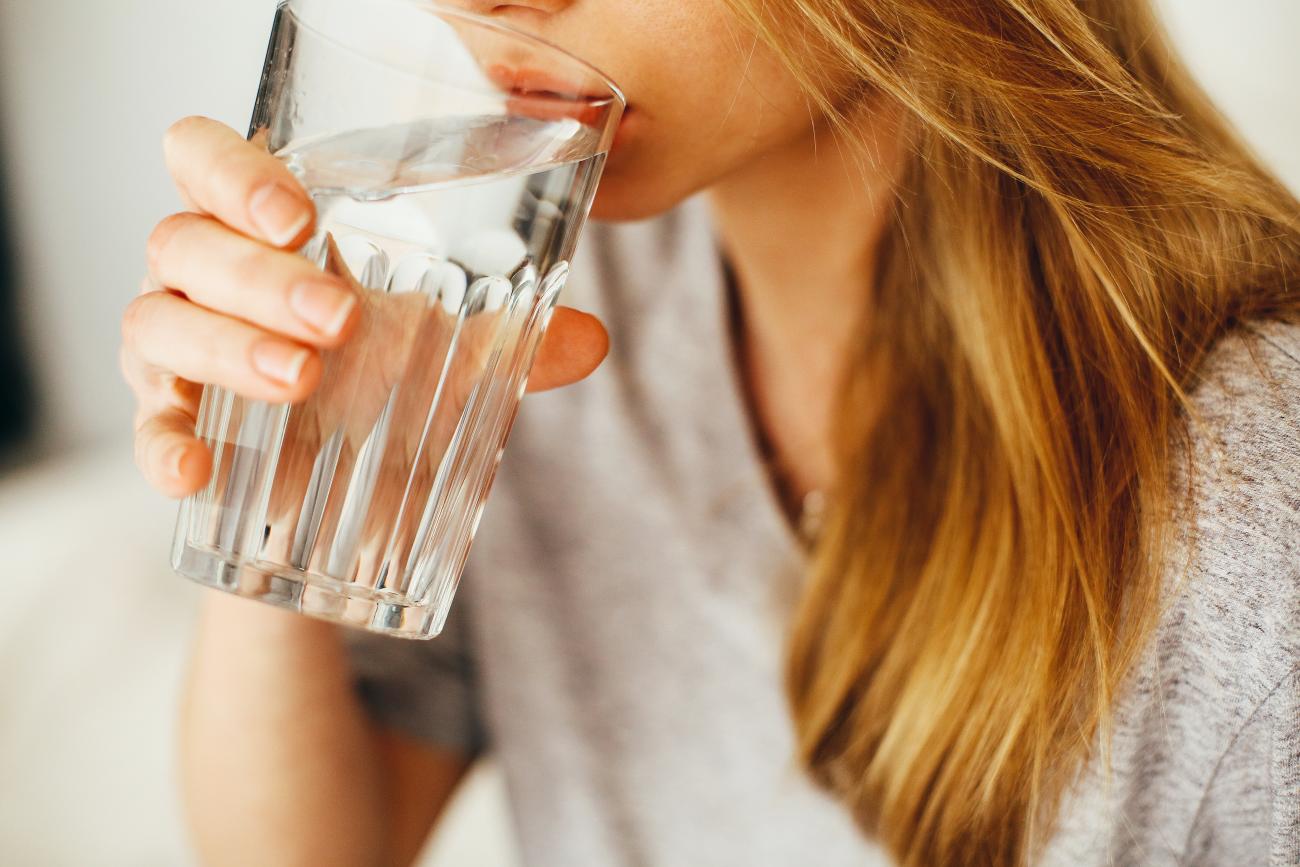Clean. Flush. Consume Cold.
Clean, Flush and Consume Cold are the actions all customers should implement to help ensure the highest quality of water is coming out of your tap, especially if there is the possibility of lead in your plumbing system.
In some situations, a water system repair/replacement may temporarily increase lead levels in water and/or cause discoloration. As a standard practice, the USEPA recommends these actions, which are important to take when water has been restored after a disruption of service and when water has been unused for an extended period of time.
Clean
Clean your faucet aerator screens regularly. Small particles of solder and other materials can accumulate in faucet aerators and in some circumstances can release lead into the water. Aerators should be cleaned at least twice a year, and more frequently after work is done to your plumbing system.
Flush
Flush your cold water lines before consuming water when water has not been used for 6 or more hours. The goal is to have cold, fresh water from the water main in the street come out of your tap before drinking the water. To flush the plumbing, run water until you feel a temperature change then run water for an additional 30 seconds to 3 minutes. The time depends on the length and diameter of your service line. The farther your home is from the street, the longer you need to flush. When in doubt, flush it out.
Consume Cold
Always use cold water for cooking, drinking, and preparing baby formula. Hot water corrodes pipes faster and is more likely to contain lead. If you need hot water for food or drinks, get water from the cold water tap then heat the water.
Additional Actions
Customers with a single-family home that has a full or partial lead service line and/or lead plumbing or copper plumbing with high lead solder installed between 1982 and 1989 can volunteer to participate in our Lead & Copper Compliance Monitoring program. To have your home added, call 216-664-2882 or download and complete the form. Customers can also have their water tested at their cost at a certified laboratory. The Ohio EPA maintains a list of certified laboratories that can test for lead
Older faucets may contain higher levels of lead. Faucets manufactured and sold in the U.S. between 1986 and 2014 can contain up to 8% lead in brass used for water fixtures and fittings. Faucets manufactured and sold after 2014 are considered “lead-free” and contain less than 0.25% lead in brass alloys used for areas that come into contact with water.
Water filters, including water-filtering pitchers, filters that attach directly to faucets, and other point-of-use devices, should be certified to remove lead by an organization such as the National Sanitation Foundation International (NSF), Underwriters Laboratory (UL), or Water Quality Association (WQA). Filters should only be used with cold water and replaced according to the manufacturer’s instructions to ensure they work effectively.
Customers can choose to replace their customer-owned lead service lines. If you elect to replace your service line sooner or are required to because the customer-owned portion of your service line is leaking, please call Cleveland Water at 216.664.2444 ext. 75209 to let us know the date your replacement work is scheduled. When your plumber/contractor has the hole dug at the curb stop, we will visually check the city-owned service line material. If it is lead, we will replace the city-owned portion as soon as we can at no cost to you.
Please note, if a customer-owned service line is leaking and you have been issued a notice to fix the leak, lead service lines should NEVER be repaired as this can release a very high level of lead into the water. Leaking lead service lines must only be replaced.
Respond To Our Offers – When Cleveland Water disturbs the city-owned portion of a service line, our goal is to replace all lead material found on either side of the curb stop, with copper, including galvanized steel downstream of lead. Cleveland Water will replace lead pipes with copper.
This work by Cleveland Water may be done during water main replacements or emergency repairs, or as part of our Lead Service Line Replacement Program.
Our Lead Service Line Replacement Program began with replacing all lead services to state-licensed childcares in our service area in 2020 with $2.5 million in federal and state grants. Since then, we have been proactively seeking funding and replacing lead service connections. Starting in 2022, we began seeking Bipartisan Infrastructure Law funding to continue the work of replacing lead water service lines.
The system-wide replacement of lead service lines will take time. Not all customers on a street will have a lead service connection. When we get to your street, you can help in the efficient replacement of lead services by promptly responding to our offer of replacement.
According to the Ohio Department of Health, deteriorating lead-based paint and its resulting lead dust are the most common causes of lead exposure in children in Ohio. Lead was historically used in a wide variety of products and can be found in ceramics, soil, batteries, jewelry, and cosmetics. Check the resources below for additional information about lead and lead poisoning prevention.
Other Resources
- City of Cleveland Lead Hazard Control Program
- Cuyahoga County Lead Safe Program
- Ohio Department of Health Lead Abatement Tax Credit Program
- Ohio Department of Health Lead Hazardous Properties
- US EPA Real Estate Disclosure Information for Home Buyers and Renters
- US EPA Protect Your Family from Exposures to Lead
- National Center for Healthy Housing: Find It, Fix It, Fund It
- U.S. Department of Housing and Urban Development Lead-Based Paint and Lead Hazard Reduction Demonstration Grant Programs



